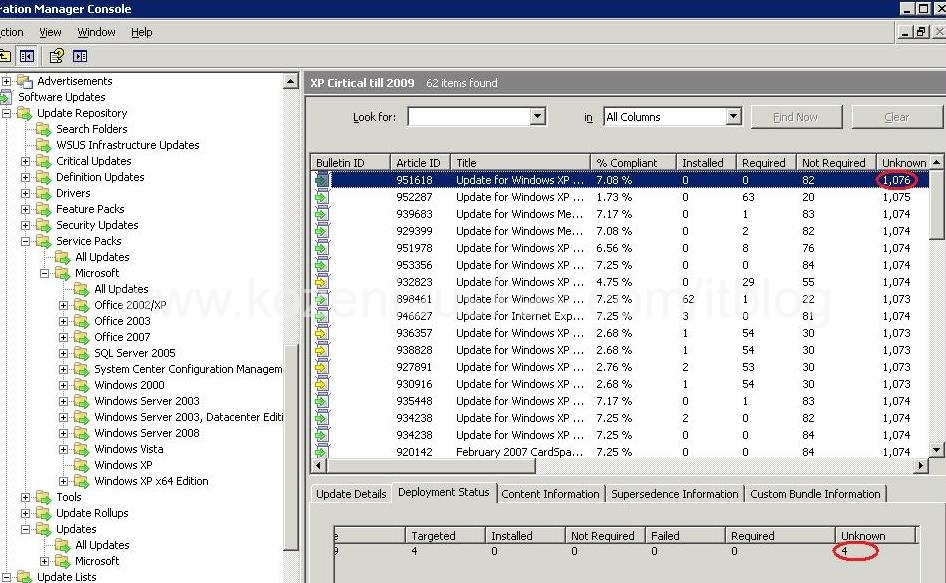

$TargetFolder = " $SiteCode " + " " + $ErrorFolder

# Create collections for the "error" enforcement state

SCCM SOFTWARE UPDATE GROUP CODE
# Create collections for each error code in the error code tableįoreach ( $ErrorCode in $ErrorCodes. $SiteCode = ( Get-PSDrive –PSProvider CMSITE).Name Replace( 'i386 ', 'ConfigurationManager.psd1 ') 2147024784 = 'There is not enough space on the disk. 2147024598 = 'Too many posts were made to a semaphore. 2147023890 = 'The volume for a file has been externally altered so that the opened file is no longer valid. 2147023436 = 'This operation returned because the timeout period expired. A system reboot is required to roll back changes made. 2147021879 = 'The requested operation failed. 2147018095 = 'Transaction support within the specified resource manager is not started or was shut down due to an error. 2147010893 = 'The referenced assembly is not installed on your system. 2147010815 = 'The referenced assembly could not be found. 2147010798 = 'The component store has been corrupted. 2146889721 = 'The hash value is not correct. 2146762496 = 'No signature was present in the subject. 2145124320 = 'Operation did not complete because there is no logged-on interactive user. 2145123272 = 'There is no route or network connectivity to the endpoint. 2145120257 = 'An operation failed due to reasons not covered by another error code. 2145107951 = 'WUServer policy value is missing in the registry.
SCCM SOFTWARE UPDATE GROUP DOWNLOAD
2016411012 = 'CI documents download timed out ' 2016410026 = 'Updates handler was unable to continue due to some generic internal error ' 2016410012 = 'Updates handler job was cancelled ' 2016410008 = 'Software update still detected as actionable after apply ' 2016409844 = 'Software update execution timeout ' $UnknownFolder = "Devicecollection\SUP\SUP Errors\Enforcement State Unknown " $ErrorFolder = "Devicecollection\SUP\SUP Errors\Enforcement State Error " # Folders to place the collections in (must exist) # Script to create collections for Software Update installation errors # The error description is added to the Comment field, so just add that in the console view. Here’s what the end result will look like. For example, you can add a ‘where’ clause for SUM.CollectionName to target particular collections, or SUM.AssignmentName to target specific SUG deployments. You may wish to be more targeted in the WQL query for the collection rule, targeting only certain collections or deployments etc. I’ve split the collections between those with an “error” enforcement state and those with “unknown” as you may wish to handle them separately, and placed the collections for each state in different sub-folders. Run the script on a site server or anywhere with the SCCM console installed. To translate error codes to friendly descriptions, see here. I’ve included some common error codes for software updates and their friendly descriptions – add or remove error codes according to your own environment.

You need to specify the error codes in the Error Code translation table in the script. Next is a PowerShell script that will create collections for each error code. Select Count(ResourceID),LastEnforcementErrorCode This will find systems in the “Error” or “Unknown” enforcement states for software update deployments and group them by the enforcement error code. To find which software update installation errors you are experiencing in your environment, you can run the following SQL query against the SCCM database. If you’re lucky enough not to have any errors installing software updates with SCCM, then this post isn’t for you, but if you do experience installation failures it can be helpful to collate machines with the same error into collections so you can easily target them for remediation using the SCCM Scripts feature for example, or just for visibility and reporting. In this post, I will do the same for Software Update installation failures. Recently I published a blog about creating collections for SCCM client installation failures by error code.


 0 kommentar(er)
0 kommentar(er)
